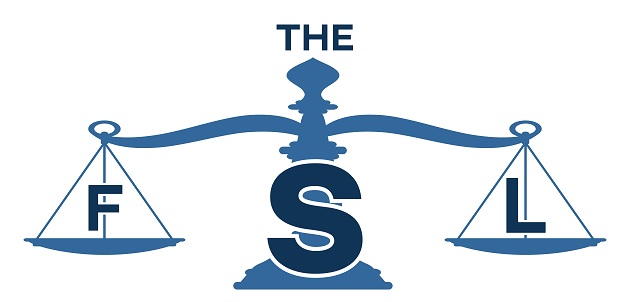

The Audio Signal Processing Services, provided by The Forensic Sound Laboratory, are designed to prepare, process, translate and present credible sound and speech evidence for legal purposes and for court.
The types of Audio Signal Processing Services we provide are...
Preparation of Audio EvidenceThe Preparation of Audio Evidence for Court can involve Media Translation, Listening Optimisation, Region of Interest Extraction and Investigation into the Credibility of Evidence for Court. Media Translation is the process of converting media from one format into another format. Listening Optimisation is the process of getting the evidence amplified and filtered so as to optimise evidence understanding. Region of Interest Extraction involves separating out the key sections of the audio evidence. Investigation into the credibility or suitability of the audio evidence to be used in court. This means that the audio evidence has to represent the original auditory scene beyond reasonable doubt. For a full description of our media translation services, please go to our Preparation of Evidence page. |
|---|
Enhancement of Speech or Reduction of NoiseSpeech Enhancement is the process of estimating the characteristics of the speech and enhancing that speech so it can be more easily understood. Noise Reduction is the process of estimating the characteristic of noise and reducing that noise so that speech can be more easily understood. The aim of Speech Enhancement or Noise Reduction is for the Intelligibility of Speech to be improved such that the words, phrases and sentences can be clearly heard and understood. Common Speech Enhancement and Noise Reduction Algorithms are Spectral Subtraction, Wavelet Enhancement, Statistical Filtering and Componemnt Separation. For a full description of our speech enhancement and noise reduction services, please go to our Speech Enhancement page. |
Acoustic Analysis of SpeechSpeech Acoustic Analysis is the process of using speech sound acoustic features to determine the most likely word or set of words spoken.In Speech Analysis, the acoustic characteristics of speech are analysed to obtain an estimate of the possible phonemes or consonsonant vowels that occur. Common temporal acoustic characteristics are the envelope, the waveform, the short tern RMS energy, the zero crossings, the peak clipping plot, the intensity histogram and the the variation in mean and standard deviation across frames. Common spectral acoustic characteristics are the short term power spectral density, short term FFT or LPC spectra and the variation in rms/mean and standrd deviation across frames. Common time-frequency acoustic charateristics are the spectrogram and the wavelet characteristics. The aim is to be able to give expected phomeme/CV options and a statistical likelihood of words spoken. |
Authentication - tamperingAuthentication Investigation into the tampering of audio evidence for court is the process of determining whether the original media file, and hence any evidence derived from it, has been tampered with post or during recording.Sound Evidence is investigated for tampering by using complex signal processing algorithms to detect temporal, spectral or time frequency discontinuities in the sound file; then checking if these discontinuities are aligned with or fit into listening anomalies and/or are not generated by the equipment itself. The most common algorithms for detecting anomalies in sound files are wavelet analysis or statistical analysis on acoustic chararacteristics of the sound file. Discontinuities in the speech file are more easily detected by wavelet analysis with the haar base wavelet. The aim is determine if the audio evidence has been "altered" in any way and hence the evidence differs significantly from the original auditory scene. |
Scientifically Valid Transcription ProcessTranscription is the process of obtaining a written output of the speech (and possibly noise) in the sound file.When a transcript is presented in court, it needs to represent the original auditory scene accurately and fully. If words or phrases from the original auditory scene are not in the transcript then the transcript is invalid. To obtain a scientifically valid transcript, a statistically significant number of independent normal hearing listeners (not involved with defence or prosecution) need to agree that the same words were spoken "beyond reasonable doubt". This means that any transcript used in court needs to acompanied by a statistical estimate of the reliablity of the transcript in legal terms. The aim is have a scientific estimate of the reliability of the transcript as audio evidence. |
Scientific 'Beyond Reasonable Doubt'Scientists and Engineers use mathematical models of physical phenomenon to solve real world problems.That means that the reliability of Scientific Evidence is centred around how accurately those models fit the real world situation.The way that a Scientist or Engineer bridges the gap between Scientific Conclusions with it's assumptions and the corresponding uncertainty and the Legal concept of "Beyond reasonable Doubt" is to use statistical analysis. For Example to determine scientifically whether or not a talker spoke certain words requires that at least ten independent, normal hearing listeners listen to those words and transcribe them. Statistical analysis of those transcripts would indicate the reliability in whether those words were spoken or not. |
Speaker or Voice IdentificationSpeaker or Voice Identification is the process of determining the likelihood that a certain person (suspect) was speaking in a recorded audio file (perpetrator's voice).The suspect's voice acoustic characteristics are compared to the perpetrator's and a control group of persons of same gender, same approximate age, same socio-economic group, similar education and same ethniticity. |
Sound IdentificationSound Identification is the process of determining, in some way, characteristics of the sounds in a recorded audio file.For example Gun shot analysis has the acoustic characteristics of all guns in the recording compared to the acoustic characteristics of control audio samples to determine which gun fired first or how many shots were fired. |